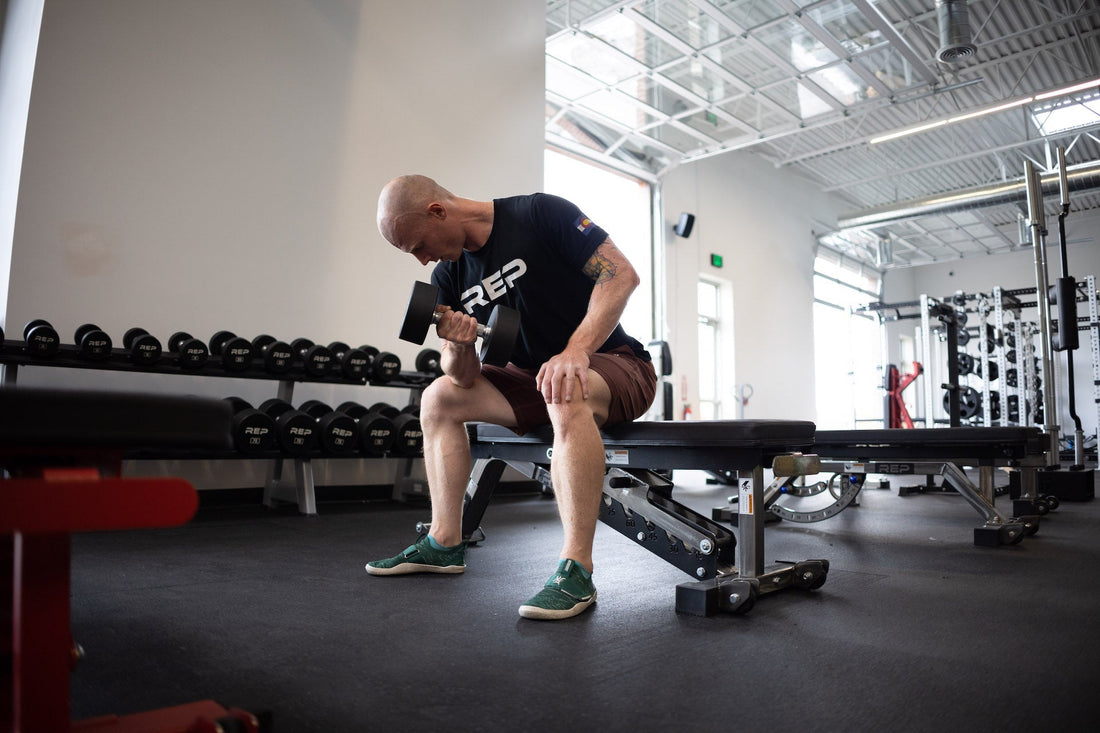When it comes to maintaining or improving your health and fitness, one of the most common questions is, "How often should I work out?" The answer isn't as straightforward as x number of days per week. In truth, how often you should exercise depends on a variety of factors, including your individual fitness goals, fitness level, type of workout, and even personal schedule. But that doesn't mean this Q has no A. Here's what the science and research says, so you can make an informed plan for yourself.
Understanding the Basics of Exercise Frequency
The Centers for Disease Control and Prevention (CDC) recommends that adults get at least 150 minutes (2.5 hours) of moderate-intensity aerobic activity or 75 minutes (1.25 hours) of vigorous-intensity activity every week, along with muscle-strengthening activities on two or more days per week. This guideline serves as a foundation, but the optimal frequency can vary based on your specific fitness goals.
Fitness Goals and Workout Frequency

General Health and Longevity: For people primarily interested in general health and longevity, sticking to the CDC’s guidelines is a great starting point. Regular exercise reduces the risk of chronic diseases, such as heart disease, diabetes, and certain cancers. A study published in the American Journal of Preventive Medicine shows that meeting these minimum exercise guidelines can significantly reduce mortality risk.
Fat Loss and Weight Management: If fat loss or weight management is your goal, you might need to increase the intensity or duration of your workouts. Research indicates that 250 minutes (4.2 hours) per week of moderate to vigorous exercise is more effective for significant fat loss. This suggests working out roughly five days a week, combining both cardio and strength training for optimal results.
Building Muscle and Strength: For muscle gain, frequency depends on the intensity and type of your workouts. Strength training typically requires sessions on non-consecutive days to allow muscle recovery. A common approach is to train each major muscle group two to three times per week, as suggested by a comprehensive review in the Journal of Sports Sciences.
Endurance Training: Endurance athletes often train five to six days per week, varying between hard, easy, and moderate training sessions to optimize performance while preventing overtraining. Balancing intensity and recovery is crucial, as highlighted in research from the Journal of Applied Physiology.
The Role of Recovery in Fitness

Recovery is an integral part of an effective workout routine. Overtraining can lead to injuries, fatigue, and decreased performance. According to the Journal of Strength and Conditioning Research, adequate rest between workouts is essential for muscle recovery and growth, especially after high-intensity or resistance training sessions.
Read more about the importance of rest days here.
Here's a look at some useful mobility and recovery tools -- in particular an amazing massage gun, quality foam rollers, floss bands, Massage Rollers, and balls and rollers.
Personalization is the Key to Fitness
Listen to Your Body: Everyone’s body responds differently to exercise. Pay attention to how you feel during and after workouts. Signs of needing more rest include prolonged muscle soreness, fatigue, and a lack of progress in your workouts.
Consider Your Schedule and Lifestyle: Your workout frequency should realistically fit into your daily life. It's important to find a balance that does not cause stress or interfere with other life responsibilities.
Adjustments Over Time: As your fitness level improves, you might need to increase the intensity, duration, or frequency of your workouts to continue seeing progress. Conversely, during busy or stressful periods, you may need to scale back.
Leveraging Technology and Professional Guidance in the Gym

Using fitness trackers and apps can help monitor your activity levels and provide insights into your progress and health metrics. Additionally, consulting with fitness professionals can tailor a workout plan to your specific needs, abilities, and goals, ensuring that your exercise frequency is both safe and effective.
Unsure where to start? Check out REP's programming partners, which offer smart and strategic fitness programs, personal trainers, AI-based workouts, a supportive community and more.
Bottom line: There is no one-size-fits-all answer to how often you should work out. It depends largely on your individual health goals, fitness level, and the types of exercise you are doing. Whether your aim is to improve general health, lose weight, build strength, or enhance endurance, the key is to stay consistent and allow adequate time for recovery. Remember, the best workout plan is one that you can stick to long-term, bringing you joy and significant health benefits.
Aimee Heckel, CPT, is a health and fitness journalist with over 20 years of experience. She set an all-time world-record deadlift in her division across all powerlifting federations at Mr. Olympia. In addition, she earned a national deadlift record and 18 Colorado state records. Heckel also has nine world records in grip sport, a pro card in natural figure bodybuilding, four first-place bodybuilding titles, and was named IPE Ms. Colorado Figure.




